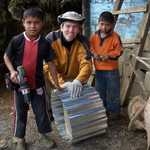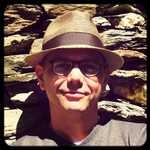Stone is a fundamental reference point for the concept of fixity: set in stone, permanent, immovable. Yet from ancient times humans have been carting heavy stone from place to place.
The Inka transported huge stones over distance; indeed, in the last days of their empire, stone, was quarried south of Cuzco and then moved north over 1000 K to what is now Ecuador. Ancient Roman stone was moved by ship from the Port of Carrara to many places in Europe. Even earlier in human history, the Olmec moved massive stone sculptures (of human heads). And then, perhaps earliest of all, there’s the question of those monoliths at Stonehenge which were apparently moved nearly 300 K from South Wales.
In modern times, we have become used to the idea that we can, for aesthetic reasons and even for economic reasons, clad our houses with stone from the other side of the planet. Admittedly, it is an utterly daft economy in which Chinese stone can lure, as it does, American builders. And I am told that the ancient Roman port of Carrara is still the centre of a great global stone industry.
“Which do you prefer for the kitchen surfaces, darling, the Calacatta marble or the Carrara?”
I seem to remember that not long ago Americans sourced their marble in Vermont or Colorado. Still a fairly long way to go for stone. I wonder if anyone has measured the long term environmental costs of transporting rocks hither and yon for centuries. Shameless profligacy.
I prefer local materials for building, and I remember the very first moment I made this judgement. It happened in Telluride, Colorado, as I stood admiring the red stone building pictured above. It was an aesthetic ‘shock of recognition’ moment. The flowing, yet embedded, processes, methodologies, technologies, philosophies, that encompassed the mining, designing, shaping, crafting, building, all, all in one place. Authentic. Local. From nature to culture!
Of course, the moment passed quickly, but I still remember the fiery stone on that mountainside and the handsome building it gave us.










